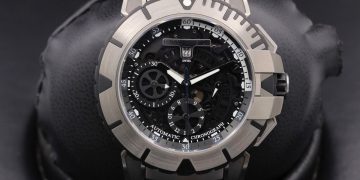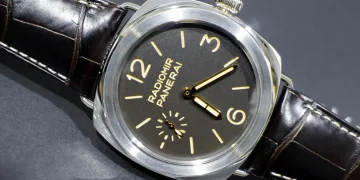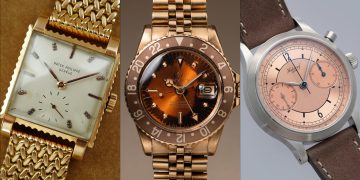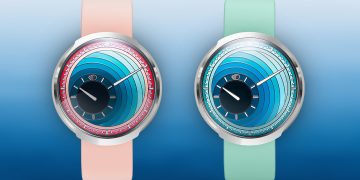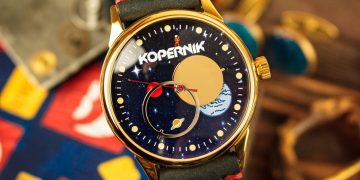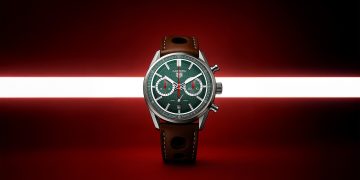Introduction:
In today’s world, watches are not just timepieces—they serve as symbols of identity, expressions of style, and reflections of personal taste. With so many options available, consumers often face a crucial question: When choosing a watch, which matters more—design or functionality? Some people might prioritize a watch with a sleek, fashionable design, while others may prefer one that excels in practicality and user-friendliness. So, in the battle between aesthetics and utility, which factor ultimately sways the consumer?
This article will explore the interaction between design and functionality in the watch industry, and how these elements influence consumer choices. We will examine both aspects in detail, identify which factors dominate the market, and analyze which consumer groups tend to prioritize design over practicality and vice versa. Lastly, we’ll discuss how a perfect balance of both can appeal to the widest range of consumers.
1. Design: The Fusion of Aesthetics and Brand Identity
Watch design is much more than just an aesthetic feature; it is a crucial representation of a brand’s personality, emotional appeal, and uniqueness. A beautifully designed watch often becomes a statement of sophistication, elegance, or modernity, which can significantly impact a consumer’s decision.
1.1 The Appeal of Design
Watches with exceptional design often attract consumers not just because they tell time, but because they represent something more significant. The aesthetics of a watch, including its color palette, shape, materials, and overall styling, make it a versatile accessory that complements an individual’s fashion and lifestyle. For instance, Swiss luxury brand Rolex is synonymous with impeccable design. Its classic models, such as the Submariner with its distinctive green dial, have transcended mere function to become a cultural symbol.
For some consumers, the look of a watch is as important—if not more important—than its ability to tell time accurately. They seek watches that not only keep time but also express their personal identity, style, and status. Luxury brands are especially effective in using design as a tool to convey these values. With features like unique case designs, signature patterns, and branded elements, these watches often become status symbols in addition to being functional tools.
1.2 Emotional Connection with Design
The emotional appeal of a well-designed watch cannot be underestimated. Watches are often associated with milestone events—birthdays, weddings, or career achievements. A beautifully designed watch serves as a reminder of these important moments, and for many, it becomes more than just an accessory; it is a keepsake. Consumers may choose a particular brand or model because it resonates with their aspirations or nostalgia.
Furthermore, some brands, like TAG Heuer and Omega, utilize design to tell a story, such as their ties to motorsport and space exploration. These narratives, combined with exceptional design, create an emotional connection that many consumers find irresistible.
2. Functionality: The Practical Considerations
While design plays a vital role, functionality is often what keeps a watch relevant and useful over time. A beautifully designed watch without useful features may have limited appeal, while a highly functional, practical watch can be a daily companion, fulfilling a range of needs beyond telling time.
2.1 The Role of Functionality in Everyday Life
Functionality in a watch refers to its ability to serve practical purposes, such as durability, water resistance, accuracy, and ease of use. For many consumers, a watch is first and foremost a tool for keeping time, and the features it offers must align with their specific needs.
For instance, Casio’s G-Shock is renowned for its rugged functionality. Built to withstand extreme conditions, it appeals to individuals who need a watch that can endure heavy physical activities, rough environments, and harsh conditions. Citizen’s Eco-Drive models, which harness solar energy to power the watch, attract environmentally conscious consumers who seek long-lasting functionality without the need for frequent battery changes.
The rise of smartwatches has further expanded the definition of functionality. Devices like the Apple Watch or Samsung Galaxy Watch combine advanced features such as health monitoring, fitness tracking, notifications, and GPS capabilities with the timekeeping function. Smartwatches offer practical value beyond just being a timepiece, making them a popular choice for tech-savvy consumers who seek convenience and integration with their digital lives.
2.2 Longevity and Reliability
For many consumers, practicality and functionality go hand in hand with the longevity of the product. Watches that are built to last, require minimal maintenance, and perform consistently well over time are highly prized. Functionality is closely linked to reliability—the more dependable the watch, the greater the consumer’s satisfaction.
In terms of mechanical watches, consumers may prioritize brands known for exceptional accuracy and the ability to maintain time across months and years, such as Rolex or Patek Philippe. These brands often offer a service guarantee, providing consumers peace of mind regarding their investment. In contrast, affordable, battery-operated watches, like those from Seiko or Timex, are appreciated for their simplicity and practicality without the need for costly servicing.

3. Balancing Design and Functionality: The Key to Consumer Satisfaction
While some consumers may prioritize one aspect over the other, others may value a combination of both design and functionality. The most successful watch brands are those that manage to strike a harmonious balance between aesthetics and practicality, offering products that are as functional as they are visually appealing.
3.1 The Need for Versatility
Many modern consumers are looking for watches that seamlessly fit into both formal and casual settings. A watch that combines exquisite design with practical features like water resistance, durability, and accurate timekeeping appeals to a broad range of buyers. This versatility is especially important for those who are looking for a timepiece they can wear every day, without sacrificing style or practicality.
3.2 Hybrid Watches: The Best of Both Worlds
One of the latest trends in the watch industry is the development of hybrid models, which combine traditional analog designs with modern smartwatch technology. Brands like Withings and Garmin offer hybrid watches that look like classic analog timepieces but also provide health-tracking and connectivity features. This combination of design and functionality attracts consumers who are hesitant to embrace full-scale smartwatches but still want some of the benefits of modern technology.
4. Consumer Groups and Their Preferences
Ultimately, the choice between design and functionality often comes down to the individual consumer’s lifestyle, needs, and values.
- Luxury watch enthusiasts may place a higher emphasis on design, valuing exclusivity, craftsmanship, and aesthetic appeal.
- Active, outdoor enthusiasts and professionals often prioritize functionality, seeking watches that are durable, reliable, and feature-rich for specific activities.
- Tech-savvy consumers and fitness enthusiasts may gravitate towards smartwatches for their advanced functionalities, tracking features, and integration with other devices.
Conclusion:
In the ongoing debate between design and functionality, both elements play crucial roles in a consumer’s decision-making process. While design appeals to those seeking beauty, prestige, and style, functionality ensures that a watch remains relevant and useful over time. The most successful watches are those that manage to integrate both aspects—offering consumers not just a tool to keep time, but a reliable and stylish companion that enhances their everyday lives.
In the end, the question of which is more convincing to consumers—design or functionality—does not have a one-size-fits-all answer. It all depends on the needs, preferences, and values of the individual consumer. The best brands understand this dynamic and create watches that balance both elements to appeal to a wide variety of customers, ensuring long-term satisfaction and loyalty.



